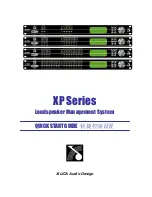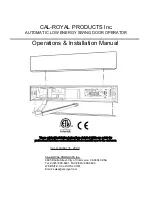
39
SECTION 10: BASIC TROUBLESHOOTING
WARNING
There are extremely dangerous voltages and power levels present inside this product. Do not attempt
to open or repair unless you are an accredited Thermal Arc Service Agent and you have had training
in power measurements and troubleshooting techniques.
If major complex subassemblies are faulty, then the Welding Power Source must be returned to an accredited
Thermal Arc Service Agent for repair.
The basic level of troubleshooting is that which can be performed without special equipment or knowledge.
10.01 Solving MIG Problems beyond the Welding Terminals
The general approach to fix Gas Metal Arc Welding (GMAW) problems is to start at the wire spool then work
through to the MIG torch. There are two main areas where problems occur with GMAW:
Porosity
When there is a gas problem the result is usually porosity within the weld metal. Porosity always stems from
some contaminant within the molten weld pool which is in the process of escaping during solidification of the
molten metal.
Contaminants range from no gas around the welding arc to dirt on the work piece surface. Porosity can be
reduced by checking the following points:
1.
Gas cylinder contents and flow meter.
Ensure that the gas cylinder is not empty and the flow meter is
correctly adjusted to 25 cubic feet per hour.
2.
Gas leaks.
Check for gas leaks between the regulator/cylinder connection
and in the gas hose to the Wire Feeder.
3.
Internal gas hose in the Wire Feeder.
Ensure the hose from the solenoid valve to the MIG torch
adapter has not fractured and that it is connected to the MIG
torch adapter.
4.
Welding in a windy environment.
Shield the weld area from the wind or increase the gas flow.
5.
Welding dirty, oily, painted, oxidized or
greasy plate.
Clean contaminates off the plate.
6.
Distance between the MIG torch nozzle and
the work piece.
Keep the distance between the MIG torch nozzle and the work
piece to a minimum.
7.
Maintain the MIG torch in good
working order.
Ensure that the gas holes are not blocked and gas is exiting out
of the torch nozzle.
Do not restrict gas flow by allowing spatter to build up inside
the MIG torch nozzle.
Check that the MIG torch O-rings are not damaged.
















































